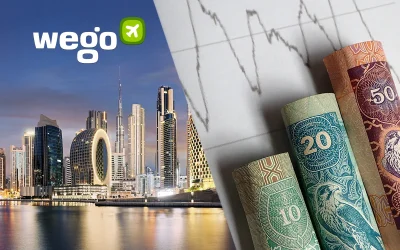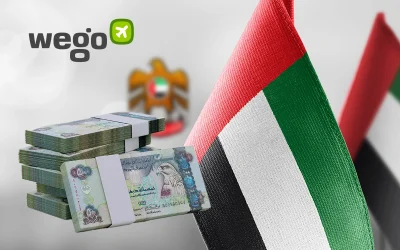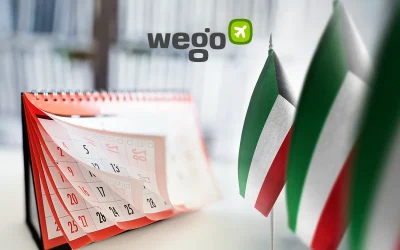This article has been reviewed by Wego‘s editorial team to ensure that the content is up to date & accurate.
The G20 Summit 2023 has recently concluded, unveiling significant developments in global policymaking. One of the most notable among these has been the announcement of a new Economic Corridor unifying the regions of South Asia, the Middle East and Europe. This partnership was forged with the active participation of esteemed world leaders and is poised to be a transformative force in the realm of regional economic investment.
In this article, Wego provides comprehensive insights into the new Economic Corridor, while spotlighting the fresh business and travel opportunities it brings forth.
Table of Contents
What is an Economic Corridor?
The term “Economic Corridor” was first coined by the Asian Development Bank in 1998. It refers to a planned geographical area or route strategically developed to streamline the movement of goods, services, and people while fostering economic growth and regional cohesion.
Economic Corridors typically involve the integration of various infrastructure components, including highways, railways, and ports, often connecting cities or even entire countries. These corridors might also be established to link manufacturing centers, regions with high supply and demand, or producers of value-added products. Ultimately, Economic Corridors are known for delivering quicker transportation, job creation, increased trade, and economic development to the regions they serve.
Some of the notable examples of Economic Corridors include the China-Pakistan Economic Corridor (CPEC), linking China to Pakistan’s Gwadar Port; the North-South Transport Corridor (NSTC), facilitating connections between India, Iran, and Russia through multiple transportation modes; and the European Union’s Trans-European Transport Network (TEN-T), enhancing connectivity across Europe.
Economic Corridor 2023 news
With the proposal for an intercontinental corridor connecting South Asia and Europe via the Middle East, the launch of a new Economic Corridor was announced at the G20 Summit 2023. Its primary objective is to invigorate economic development by improving connectivity among these regions and creating a unified channel for smooth commerce.
The railway corridor will be comprised of two different pathways, including the Eastern corridor connecting South Asia to the Middle East and the Northern Corridor connecting the Middle East to Europe. Moreover, the corridor has been strategically designed to facilitate the transmission of renewable electricity and clean hydrogen through dedicated cables and pipelines, which are expected to be installed alongside the railway routes.
According to the reports, the members of the G20 have already entered into a Memorandum of Understanding (MoU) for the development of this Economic Corridor. As per the MoU, the members intend to meet within the next sixty days to develop a dedicated plan of action with relevant timetables.
Economic Corridor 2023 objectives
The Economic Corridor will serve as a reliable channel for ship-to-rail transit. The planned railway networks are expected to supplement the existing roadway and waterway routes. According to sources, the creation of this corridor is projected to reduce transit times for goods and services traveling between Asia, the Middle East, and Europe by an impressive 40 percent.
Additionally, along the same railway routes, the project intends to install cables to facilitate seamless energy and digital connectivity, as well as pipelines for exporting clean hydrogen. This aligns with the initiative’s heightened emphasis on sustainability, aimed at reducing greenhouse gas emissions and exploring the potential of clean hydrogen to enhance the efficiency of regional supply chains.
Please note that since the project is in its fledgling stages, the exact details of these routes are not established yet but are expected soon. We will update the information as and when they are released by the officials.
Economic Corridor 2023 benefits
The Economic Corridor is poised to usher in a series of transformative improvements in the business landscape across the regions of South Asia, the Middle East, and Europe. Here are some of the key advantages that can be anticipated upon the project’s successful implementation.
Enhanced business travel
The Economic Corridor has been strategically designed to interlink some of the world’s foremost economic centers, including but not limited to Dubai, Mumbai, Riyadh, Amman, Rome, and others. These hubs stand to gain significantly from enhanced global trade facilitation and improved energy and digital connectivity.
Consequently, this development will present business travelers with a wealth of opportunities, fostering innovation, collaboration, and increased competitiveness within the corridor region. The seamless connectivity, coupled with growing integration among these centers, is poised to generate heightened demand for both skilled workers and investors, fostering a culture of free-flowing business activity.
A report from the Global Business Travel Association (GBTA) underscores the significance of the APAC and Middle East regions, which are not only the largest but also the most rapidly expanding markets in the realm of business travel. In 2023, these regions accounted for a substantial 43.5 percent of the global business travel spending. Therefore, this initiative is well-positioned to provide a substantial boost to an already thriving market.
Global opportunities
The Economic Corridor, with its aim of realizing business cohesion, is a great opportunity for workers to access global markets, resources, and networks. As integration between the nations rises through this initiative, the corridor will create millions of jobs in various sectors, such as trade, logistics, energy, tourism, and digital services.
Moreover, it will enhance the mobility and flexibility of workers, allowing them to work remotely or relocate to different locations along the corridor. As per projections by the International Monetary Fund, the corridor region is expected to achieve a robust growth rate of 5.6 percent in 2023, surpassing the global average of 4.9 percent.
Additionally, according to the World Trade Organization, in 2020, the corridor region accounted for 38.7 percent of global merchandise trade, a figure set to rise to 40.2 percent by 2023. This underscores the region’s thriving market conditions and the Economic Corridor project is poised to further catalyze growth and the creation of abundant opportunities.
Better & cost-effective connectivity
The Economic Corridor addresses a critical global void and paves the way for increased prosperity and enhanced connectivity in vital regions across the globe. The visionary project is anticipated to significantly decrease travel times between key hubs within the region through the deployment of high-speed rail networks and improved water transport links.
Furthermore, these transformative measures are also expected to stimulate tourism throughout the area, offering travelers greater choices, competitive pricing, and increased control over their travel plans.
Sustainable growth
With the increased concern of climate change, the Economic Corridor will not only boost trade and investment but also promote green and inclusive development. The corridor will use clean energy sources, such as solar and wind, to power the transport infrastructure, reducing greenhouse gas emissions and air pollution.













